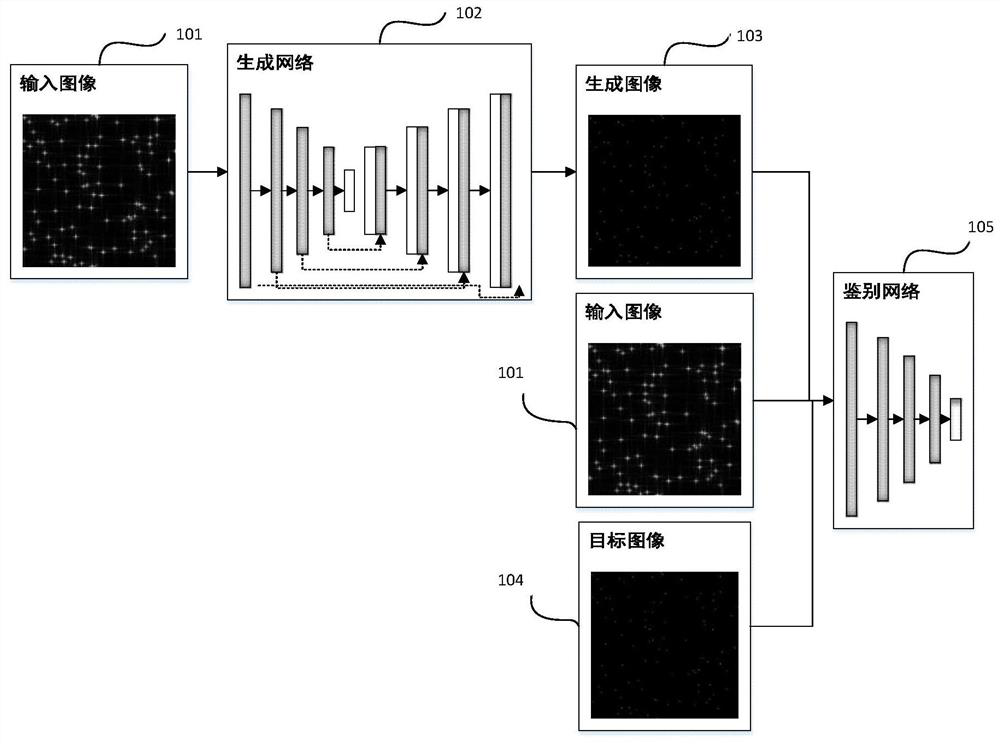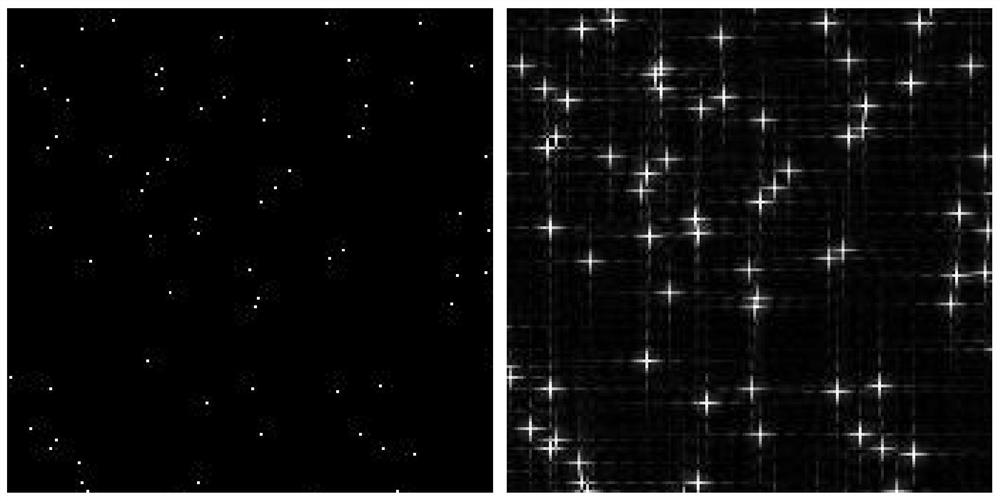A SAR Image Sidelobe Removal Method Based on Generative Adversarial Neural Network
A neural network and sidelobe technology, applied in biological neural network models, neural learning methods, neural architectures, etc., can solve problems such as resolution reduction, host energy loss, and early appearance of the first peak sidelobe, and achieve defocus suppression. , the effect of eliminating side lobes
- Summary
- Abstract
- Description
- Claims
- Application Information
AI Technical Summary
Problems solved by technology
Method used
Image
Examples
Embodiment
[0042] In order to verify the effectiveness of the solution of the present invention, the following simulation experiments are carried out. Use the simulated point target image without sidelobe and the corresponding SAR point target image with two-dimensional sidelobe generated after convolving the SAR shock response as the input of the deep learning anti-neural network, and use the convolution-deconvolution operation inside the network To learn the process of point target side lobe removal, and then use the simulation data for model testing and evaluation, and finally select the actual SAR image data, including TerraSAR-X data and SAR typical ship targets of GF-3 data as verification objects, and simulate The network model results after data sidelobe removal training and evaluation are applied to verify the sidelobe removal operation of actual SAR image data. The specific steps are as follows:
[0043] The first step is to build a sidelobe-removing network model based on the ...
PUM
 Login to View More
Login to View More Abstract
Description
Claims
Application Information
 Login to View More
Login to View More - R&D
- Intellectual Property
- Life Sciences
- Materials
- Tech Scout
- Unparalleled Data Quality
- Higher Quality Content
- 60% Fewer Hallucinations
Browse by: Latest US Patents, China's latest patents, Technical Efficacy Thesaurus, Application Domain, Technology Topic, Popular Technical Reports.
© 2025 PatSnap. All rights reserved.Legal|Privacy policy|Modern Slavery Act Transparency Statement|Sitemap|About US| Contact US: help@patsnap.com



